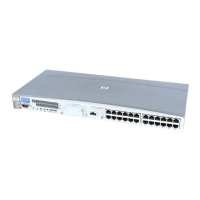-no_monitor
If this option is used, the command displays only the session ID. By default, the
command monitors the session and displays all messages.
-filesystem Client:MountPoint Label
Selects the filesystem identified with Client:MountPoint Label for object
consolidation.
-winfs Client:MountPoint Label
Selects the Windows filesystem identified with Client:MountPoint Label
for object consolidation.
-copy CopyID
Selects the copy identified with CopyID. If not specified, Data Protector
automatically selects the most appropriate copy as the source for object
consolidation.
-sourcedevice LogicalDevice
Specifies a logical device to be used for reading full object versions from the
source media. If this option is not specified, Data Protector uses the logical device
that was used for writing the objects.
-consolidationdevice LogicalDevice
Specifies a logical device that will read incremental object versions and perform
object consolidation.
-targetdevice LogicalDevice
Specifies a logical device that will be used for writing consolidated object versions
to the target media. If specified as a part of GeneralOptions, the device is
used for all objects. In this case, you can also specify device options. If you
specify several devices, the devices will be dynamically assigned to objects.
If specified as part of Object, the device is used only for this object.
You can combine static and dynamic assignment of devices by specifying some
devices as part of GeneralOptions, and for some objects, specifying a device
per object.
-concurrency ConcurrencyNumber
Specifies the number of Restore Media Agents that can send data to a device
concurrently.
The maximum concurrency value is 32.
-crc
The CRC check is an enhanced checksum function. When this option is selected,
cyclic redundancy check sums (CRC) are written to the media during object
consolidation. The CRC checks enables you to verify the media after the operation.
Command line interface reference 175

